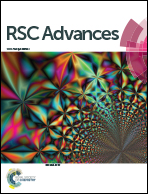Effect of graphene oxide on anticorrosion performance of polyelectrolyte multilayer for 2A12 aluminum alloy substrates
Abstract
Corrosion of aluminum alloys (Al alloys) has been a ubiquitous problem, and this seriously restricts its range of applications. Herein, a layer-by-layer (LBL) self-assembly method based on the formation and deposition of polyelectrolyte multilayers was employed to fabricate anticorrosion layers on 2A12 Al alloys for corrosion protection. LBL self-assembled films, with and without graphene oxide, were formed on Al alloy surface. The surface morphologies, roughness and chemical compositions of the as-fabricated LBL self-assembled films were characterized by several methods, such as, SEM, AFM, and XPS techniques. The electrochemical properties of the specimens were determined by EIS measurements. The comprehensive equivalent circuits were established to analyze the anticorrosion performance and inhibition efficiency of the resultant LBL self-assembled surfaces. The results indicate that the LBL self-assembled film exhibits inhibition efficiency over 99% in a 3.5% NaCl solution. After dragging to a distance of 200 mm or 400 mm, the inhibition efficiency of the LBL self-assembled film containing graphene oxide can still exceed 96%. LBL self-assembled films are considered to provide a new strategy for marine corrosion protection.



 Please wait while we load your content...
Please wait while we load your content...